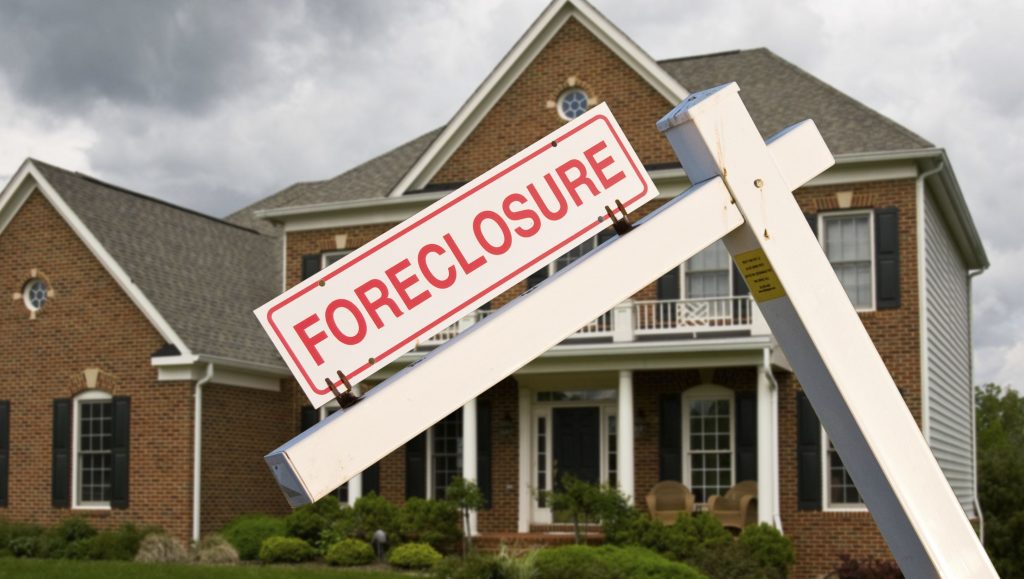At the peak, more than 9 million American homeowners paused paying their monthly mortgage payments during the most difficult months of the pandemic. They did not go into foreclosure but instead entered "forbearance." This allows homeowners with a mortgage to pause or reduce their payments for a limited time. At some point, they must resume making payments and make up the missed payments. The government says that as of July 23, 2021, there were still 1.75 million Americans in forbearance.

What’s happening now is that these forbearance periods are beginning to end. But there is not one single “stop date” for all the forbearance programs. Instead, the end of individual forbearance plans is based on when the homeowner requested them. The government plans were originally for six months and then allowed another six-month extension that came to a total of a year. For instance, people who were initially granted a forbearance on September 1, 2020, and took a six-month extension would see their program end on September 1, 2021. However, the White House has announced a way that delinquent mortgage payers can resume making partial payments (75%) to further avoid foreclosure.
Biden Administration Announces Additional Actions to Prevent Foreclosures:
“The new steps the Department of Housing and Urban Development (HUD), Department of Agriculture (USDA), and Department of Veterans Affairs (VA) are announcing will aim to provide homeowners with a roughly 25% reduction in borrowers’ monthly principal and interest (P&I) payments to ensure they can afford to remain in their homes and build equity long-term. This brings options for homeowners with mortgages backed by HUD, USDA, and VA closer in alignment with options for homeowners with mortgages backed by Fannie Mae and Freddie Mac."
~The White House
Even after forbearance programs run out, there are still multiple options available before foreclosure happens. The American Rescue Plan provides $9.96 billion for assistance with mortgage payments, homeowner’s insurance, utility payments, and other specified purposes. Agencies like Ginnie Mae and most others are also adding flexibility to extend mortgage terms up to 40 years. This will catch up with the delinquent payments and reduce monthly payments for the remainder of the loan.
Another program allows borrowers to resume their pre-COVID monthly payment after deferring up to 18 months of missed mortgage payments into a non-interest-bearing balloon payment. The missed payments do not have to be repaid until the homeowner sells or refinances the property.
The VA’s new COVID-19 Refund Modification provides multiple tools to assist certain borrowers to achieve a 20% reduction in the dollar amount for monthly P&I mortgage payments. In some cases, even larger reductions are possible.
The bottom line is that with forbearance programs ending, the 1.75 million Americans still in forbearance will need to resume making mortgage payments at some level but not necessarily full payments nor immediately make up the missed payments.
Even homeowners that cannot resume making mortgage payments are unlikely to go into foreclosure. The appreciation in home values almost assures foreclosures will not be necessary for even those in dire financial situations. Today, even after missing a year’s mortgage payments, it’s extremely rare to find a homeowner that doesn’t have positive equity in their home. If they cannot resume making lower payments stretched over 40 years, they can simply sell the house and walk away with a handsome profit. No foreclosure required.
Let’s assume that half of the 1.75 million Americans who are still in forbearance will not be able to resume payments of any kind. That means approximately 850,000 homeowners could sell for a profit before being foreclosed on. That might sound like an opportunity to the millions of people wanting to buy a home right now. But 850,000 is barely a dent in the housing inventory shortfall. Currently, The National Association of Realtors says the shortfall in available inventory is about 5.5 million. Freddie Mac puts the shortfall at 3.8 million.
At the same time, more people returning to work will eventually mean more people qualify for mortgages. But that won’t happen anytime soon because it generally requires at least two years of steady employment to qualify. Additionally, homeowners that accepted forbearance assistance won’t see their credit scores lowered. If their account was current when they entered forbearance, the loan servicer cannot report a pause in payments as "delinquent" to the credit reporting agencies. That means people who sold for a profit can jump right back into the market as soon as their finances improve.
This is all vastly different from what happened during the Great Recession when tens of millions of people found themselves with underwater mortgages. At that time, people were forced into foreclosure because they could not sell for the full amount of the outstanding mortgage. Today, at best, we may see a limited amount of additional inventory come on the market. Maybe enough new inventory to slow the skyrocketing cost of homes but certainly not enough to stagnant prices or satisfy the high demand.
What is your view of the end of the forbearance programs? Please share by leaving your comment.
Also, our weekly Ask Brian column welcomes questions from readers of all experience levels with residential real estate. Please email your questions, inquiries, or article ideas to [email protected].
Interestingly when people pay 30% over the true valueof a house they also pay a greatly increased property tax - 2% of the sales price, every year - forever. $8000 per year for a $400,000 house, $10,000 per year for a $500,000 house. Salaries are not going up to cover this. 2022 and 2023 inflation is predicted to run at 6% each year and 4/5% in 2024. Interest rates will hold near 0 to 1% stagflation. Those that did'nt pay cash and those who can't pay the property tax and insurance plus eat are not going to make it.